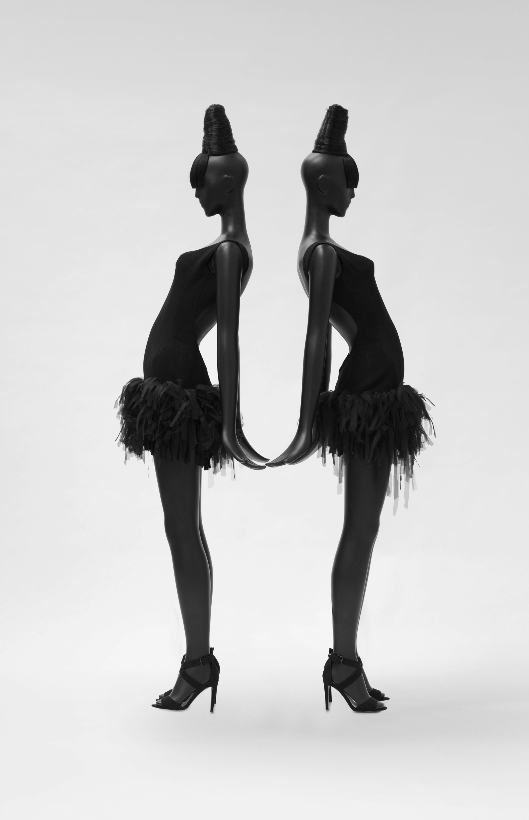Mannequins have a fascinating history that stretches back thousands of years. In fact, a wooden torso made to King Tut’s measurements was discovered in his tomb along with a chest holding his clothing. In the late 1700’s and early 1800’s, wickerwork mannequins were used as tools for tailors and dressmakers to fashion and display garments.

The late 1800’s brought an introduction of wirework mannequins and the art of window trimming. With the Industrial Revolution arrived the department store, and mannequins took on new forms and were made of wax, wood or heavy fabric with iron feet. During the early 1900’s, mannequins become more realistic visual merchandisers. World War I ushered in a revolution in women’s clothing and mannequins became more lifelike.
Since then, the progression of mannequins has reflected the life and times of humans through the Great Depression, the 50’s and 60’s and beyond. With the introduction of new materials, such as plastic and fiberglass, these forms took on even more realistic expressions and action poses.
Retail mannequins continue to evolve in the modern age. In fact, new breed of mannequin seems to be far removed from the “humanoids” of years past.
Why is this? A combination of reasons, including the recession a few years ago, has brought about an influx of less expensive mannequin alternatives. Full mannequins’ upkeep and storage may be cumbersome for smaller retailers. Perhaps they may need to change displays more quickly. In addition, the gaze of mannequins, along with a type of human form that may not be similar to theirs, may not be appealing to more particular consumers.
Whatever the reason, an influx of abstract mannequins has surfaced over the past five years. Today, many of these forms are being featured more prominently in store windows and on retail floors. In fact, a balanced mix of costumers, flexible forms, and tubular display forms can be seen almost anywhere clothing is sold.
Indeed, glorified clothes hangers are breaking traditional rules of visual displays. Overall, they have less upkeep with no hair styling or makeup to be applied. And the likelihood of losing an arm or a leg does not exist. They are also easier to dress, set up and display. Some consider them to be edgier and artier than traditional mannequins.
There is a wide selection of costumers available, including ones that are maintenance free and durable, such as freestanding or counter-top costumers, available in matte black, matte white or satin nickel in adult and child sizes. Many are highly versatile with adjustable heights to accommodate any garment length. Heavy metal bases included on many models provide extra stability. Styles range from headless busts to full forms if retailers desire a more “human” effect.
Despite all of these positives, there is still a firm place for the realistic mannequin in the modern retail display market. Given the over 1,000-year history that will never change. Available in all shapes, sizes, colors, materials and dimensions, “human style” mannequins are still hugely popular and highly effective sales boosters.
As such, successful retailers are still implementing a range of lovely human figures to spark the fantasy and imagination of the consumer. After all, if you have a maternity or lingerie section in your store, will just a tubular display do? Realistic shapes are still one of the best methods to realistically display clothing for peak sales and are one of the finest methods of impactful visual advertising.

 +8618039231875
+8618039231875
 Get a quote
Get a quote
 Mobile Website
Mobile Website